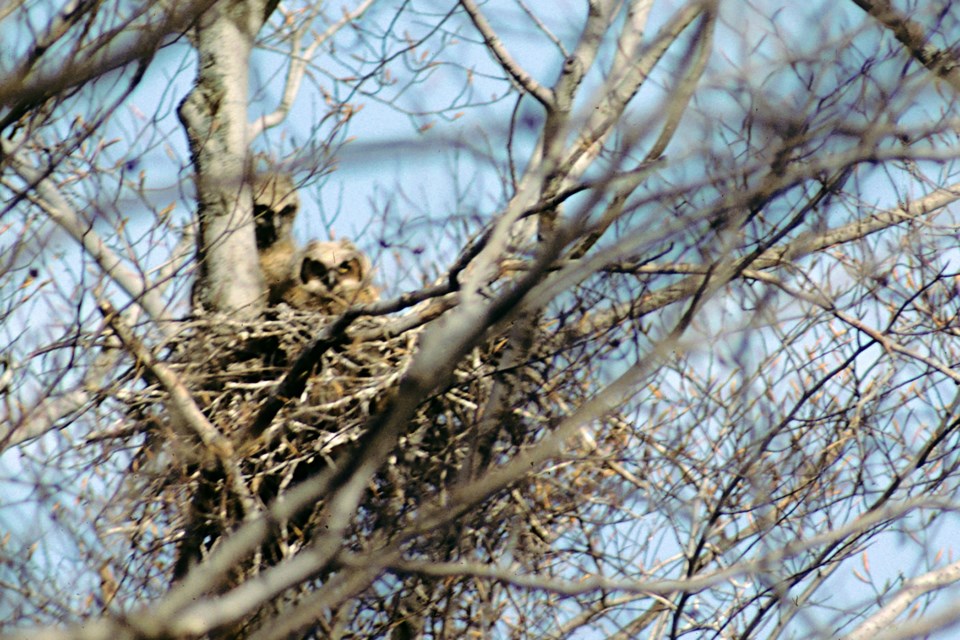The wind rattles bare branches and damp coldness fills the night air. Dark grey clouds obscure stars and moon. A scattering of ice crystals ricochet off frozen tree bark as the storm front passes through.
Love is in the air. Love, perhaps, if you are a great horned owl.
It is in the eye of winter when the romantic flames of passion engulf these winged warriors. For six months of the year these birds are just flying eating machines, dining on almost anything they come upon: cats and rats and little mice, grasshoppers and groundhogs, skunks, rabbits and even other owls.
But when the urge to merge comes upon them, they get downright polite.
Starting in January, the male will bring twigs or bits of food to his beloved, preening her feathers and whispering little "who-who's" in her ear. She, in turn, may snap her bill, hiss and generally let him know she's interested. One almost blushes at the intimacy of it all.
Once the business of finding that certain someone has been accomplished, then comes the hunt for good real estate.
Great horned owls are big birds, and as such require big territories, especially when the cute little owlets begin popping out their eggs. But I'm getting ahead of myself… first the territory must be established.
This is done by calling from prominent tree roosts, letting all others of their ilk know where the line will be drawn in regards to trespass. The male and female work together to hold the territory, perhaps bringing a new meaning to "a great pair of hooters."
Listen for them from mid-January to mid-February.
Then comes the nest building. This is where the lady finds out that perhaps the gent ain't all he claims to be, as owl nests are untidy at best, unstable in the extreme.
Often the best compromise to is to move into an old hawk or crow nest and hope it holds together. Once established, the male may dismantle other nests in the territory, probably to avoid comparisons to his own home site.
Their territory includes fields, forests and wetlands, preferring a mix of hunting and roosting areas. Size-wise (because size matters) the area may encompass 200 acres or more per pair.
Between St. Valentine's Day and the first day of spring, Momma owl incubates the eggs. Poppa brings tid-bits of food to her, and on the odd occasion may even cover the eggs while his spouse enjoys a few hours off. Is this a new-age sensitive bird, or what?
About the time the howling ice storms of March sweep through, the little owlets are hatching. I guess when you're born during a late winter storm, you can't help but grow up tough. (Maybe if we caught them while they're still young and put little uniforms on them they would grow up to be more like mourning doves? Just a thought.)
One thing that owls can do well, is defend their nest. Wildlife researchers and nature photographers all have stories to tell of owl attacks. Some of these stories end with the death of the intruder, as sharp talons cut deep when an angry owl makes contact with your head. Beware... above... the great horned owl!
As the snow melts and wildflowers appear, the owls leave the safety of their dishevelled nest and begin free flights throughout the woodlot.
At that time of year, the hawks and crows will begin turning their attention to nesting, and no doubt wonder what the heck happened to their beautiful structure of last year. Kinda like time-share, only without the maintenance fees.
